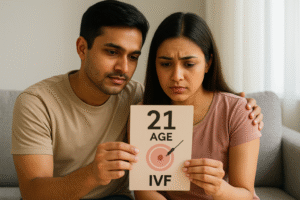Overview
For many women, the word “perimenopause” arrives like an uninvited guest—sudden, somewhat mysterious, and bringing along a collection of unexpected challenges. Yet this natural transition deserves our attention and understanding, not our fear or embarrassment.
What Exactly Is Perimenopause?
Perimenopause marks the transitional period when your body begins its journey toward menopause. During this time, your ovaries gradually decrease their production of estrogen and other hormones, creating a ripple effect throughout your reproductive system and beyond.
Unlike menopause (which is officially reached after 12 consecutive months without a period), perimenopause is a gradual process that can last anywhere from a few months to several years. Most women enter this transition in their mid-40s, though it can begin as early as your mid-30s or as late as your mid-50s.
Sarah, a 46-year-old marketing executive, describes her experience: “I’d always been like clockwork—then suddenly my periods became erratic. Some months heavy, others barely there. I thought something was wrong until my doctor explained I was entering perimenopause.”
The Hormonal Rollercoaster Explained
The primary driver behind perimenopause symptoms is declining estrogen levels. As your ovaries reduce hormone production, the balance between estrogen and progesterone becomes increasingly unpredictable—more like a rollercoaster than a gentle decline.
This fluctuation affects the menstrual cycle in various ways. You might experience:
● Irregular periods that come earlier or later than expected
● Heavier or lighter bleeding than usual
● Skipped periods entirely, followed by normal cycles
● Changes in premenstrual syndrome symptoms
Despite these changes, it’s important to remember that you can still become pregnant during perimenopause. Until you’ve gone a full year without a period, ovulation may still occur, even if irregularly.
Common Symptoms Beyond Menstrual Changes
While changing periods are typically the first noticeable sign, perimenopause affects much more than just your menstrual calendar:
- Hot flashes and night sweats (those sudden waves of heat that can leave you drenched)
- Vaginal dryness and discomfort during intimacy
- Sleep disruptions and insomnia
- Mood fluctuations, depression, and anxiety
- Low libido and changes in sexual response
- Fatigue and energy level changes
A gynecologist, notes: “Women often dismiss these symptoms as stress or aging. But recognizing them as perimenopause can be empowering—it gives you the opportunity to seek appropriate support and care.”
When Perimenopause Isn’t Normal: Warning Signs
While irregular cycles are expected during perimenopause, certain types of vaginal bleeding warrant medical attention:
● Extremely heavy bleeding or large blood clots
● Periods lasting significantly longer than usual
● Bleeding between periods
● Bleeding after intercourse
These symptoms could indicate other conditions like infection, fibroids, polyps, blood clotting disorders, or in rare cases, cancer. Always consult your healthcare provider if you experience concerning changes.
Diagnosing Perimenopause
Interestingly, there’s no definitive test for perimenopause. Your doctor may measure FSH (follicle-stimulating hormone) levels, which are released by your pituitary gland and typically increase as estrogen decreases. However, because hormone levels fluctuate significantly during perimenopause, a single FSH test isn’t always reliable.
Most often, diagnosis comes from discussing your age, symptoms, and menstrual changes with your healthcare provider.
Strategies to Manage Perimenopause Symptoms
The good news is that you don’t have to simply endure perimenopause. Several approaches can help minimize discomfort:
Medical Options:
● Hormonal treatments (when appropriate)
● Antidepressants for mood symptoms and hot flashes
● Birth control pills to regulate cycles and hormonal fluctuations
● Targeted treatments for specific symptoms like vaginal dryness
● Behavioral therapy for managing mood changes and sleep issues
Lifestyle Approaches:
● Regular physical activity (especially weight-bearing exercises)
● Diet modifications—reducing alcohol, caffeine, and saturated fat
● Stress management techniques like meditation or yoga
● Improving sleep hygiene
“Small changes made a significant difference for me,” shares Rina, 49. “Cutting back on wine and coffee reduced my hot flashes dramatically, and morning walks helped stabilize my mood.”
The Connection Between Perimenopause and Long-term Health
As estrogen levels decline, your risk for certain health conditions may increase:
- Osteoporosis and bone density loss, increasing risk of fractures
- Heart disease and other cardiovascular concerns
- Weight changes due to shifting metabolism
Preventive measures like calcium and vitamin D supplements, regular exercise, and avoiding smoking cigarettes can help protect your long-term health during this transition.
Special Considerations: When Perimenopause Comes Early
Some women experience perimenopause symptoms earlier than expected, known as premature menopause (before age 40) or primary ovarian insufficiency. This can occur naturally or result from medical procedures like hysterectomy or oophorectomy.
Early perimenopause may require additional medical support, as it can impact fertility plans and increase health risks associated with longer-term estrogen deficiency.
Embracing the Transition
Despite its challenges, perimenopause represents a natural life transition rather than a medical problem to be “fixed.” Many women find that understanding the process helps them approach symptoms with greater confidence and self-compassion.
“I’ve learned to see perimenopause as a new chapter rather than the end of something,” says Mayur, 51. “It’s prompted me to prioritize my health in ways I hadn’t before, and honestly, there’s something freeing about entering this new phase of life.”
Moving Forward
If you suspect you’re experiencing perimenopause, start by tracking your symptoms and menstrual changes. This information will be valuable when discussing your experiences with your healthcare provider, who can help determine if your symptoms require medical intervention or if lifestyle changes might be sufficient.
Remember that perimenopause is deeply individual—your experience may differ significantly from friends or relatives. The key is finding the approach that works best for your unique situation and needs.
What’s your perimenopause story? Understanding that millions of women are navigating similar experiences can make this transition feel less isolating and more like the natural life phase it truly is.












 No need to worry, your data is 100% Safe with us!
No need to worry, your data is 100% Safe with us!